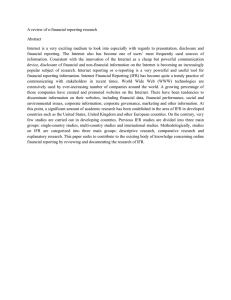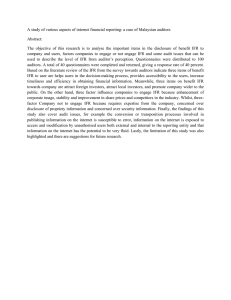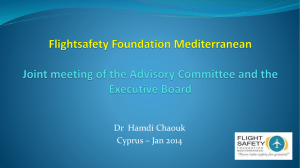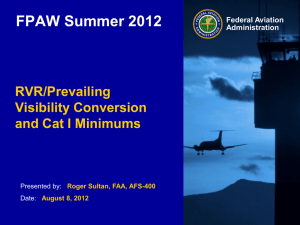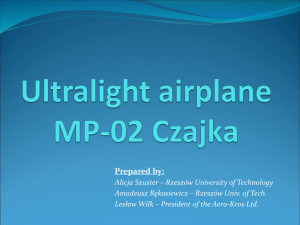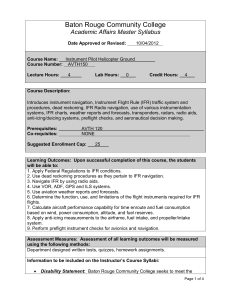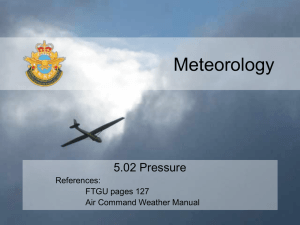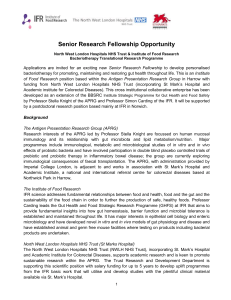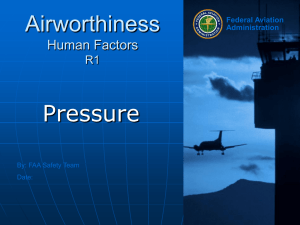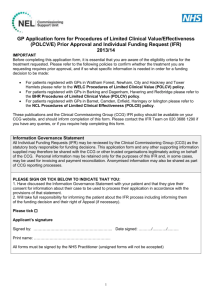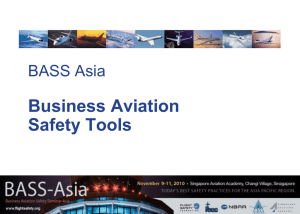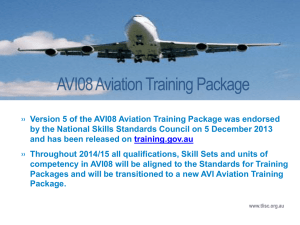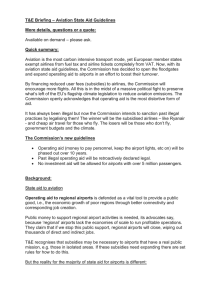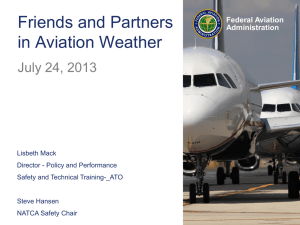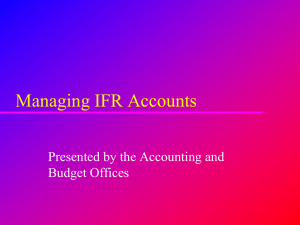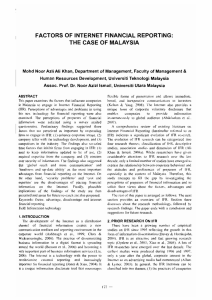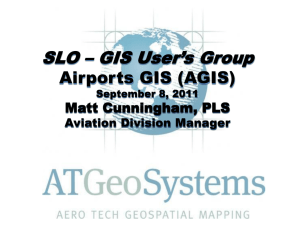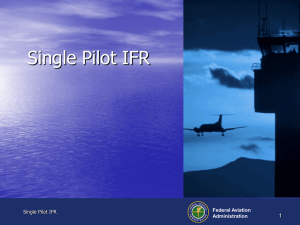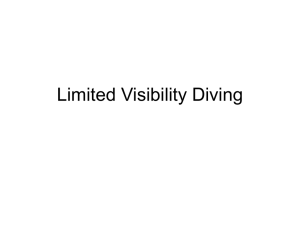Roger Sultan
advertisement
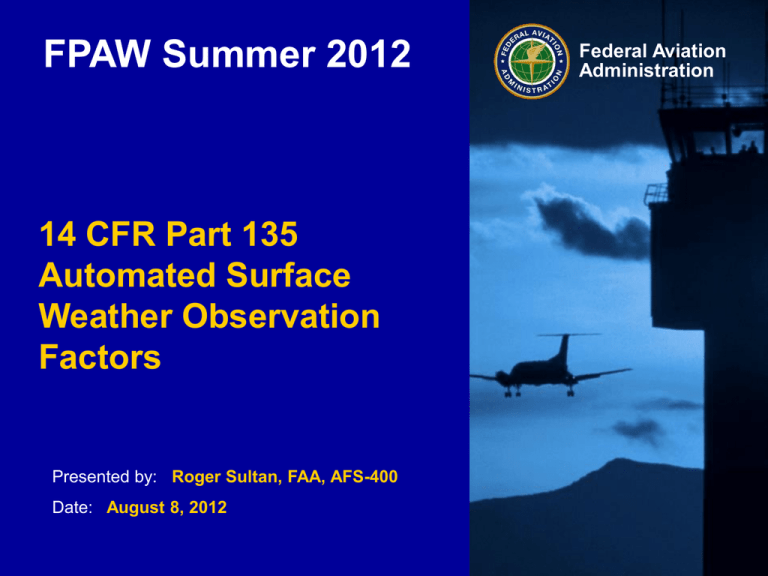
FPAW Summer 2012 14 CFR Part 135 Automated Surface Weather Observation Factors Presented by: Roger Sultan, FAA, AFS-400 Date: August 8, 2012 Federal Aviation Administration Regulatory Information • § 135.213 Weather reports and forecasts (a) Whenever a person operating an aircraft under this §is required to use a weather report or forecast, that person shall use that of the U.S. National Weather Service, a source approved by the U.S. National Weather Service, or a source approved by the Administrator. However, for operations under VFR, the pilot in command may, if such a report is not available, use weather information based on that pilot's own observations or on those of other persons competent to supply appropriate observations • § 135.213(b) Permits use of weather from another location that is not the airport where IFR Ops are conducted OpSpec required - Alternate source of weather information after “an investigation” by NWS and FAA • Part 135 Subpart I Performance Operating Requirements § 135.361 – 135.399 PIC must comply with the take-off weight and landing limitations In addition to altimeter and visibility, PIC must have • Wind direction • Wind speed • Temperature Federal Aviation Administration 8900.1 Guidance Reference 8900.1 Volume 3 Chapter 26 Section 4 – Sources of Weather Information • Guidance states that when a Part 135 operator uses a weather report, the report must contain at least the following meteorological information: Time of observation Visibility Altimeter setting (unless using approach minimums with an alternative remote altimeter setting) Temperature (temperature may be missing if the operator has a FAAapproved method of determining the temperature for takeoff or landing), Wind speed and direction (from either the weather report or via local ground communications), and Cloud height (if specifically required for the approach or departure procedure) Federal Aviation Administration 8900.1 Guidance Reference 8900.1 Volume 3 Chapter 26 Section 4 – Sources of Weather Information • Automatic reporting systems developed and installed in accordance with AC 91-54, and operated as independent, single-source reporting systems do not satisfy the requirements of Part135 for official aviation weather reports Automated reporting systems implemented under the guidelines of AC 91-54 may be approved as weather sources for Part135 operations only when upgraded to meet the newer standards established in AC 150/5520-16 • FAA-owned and operated AWOS-2 and AWOS-3 systems are automatically approved sources of weather for Part135 operations Restrictions apply to AWOS-2 (next slide) • NWS-operated ASOS are automatically approved sources of weather for Part135 operations Federal Aviation Administration 8900.1 Guidance • Non-Fed AWOS-3 established, operated, and maintained in accordance with AC 150/5220-16 are automatically approved weather sources for Part135 operation • POIs may approve use of Non-Fed AWOS-2 systems on a case by case basis, with the following restrictions: An IFR operation which requires ceiling information as a condition for conducting that operation is not permitted at airports where AWOS-2 reports are the official source of weather information AWOS-2 airports cannot be used for alternate airports based solely on AWOS-2 reports (no cloud height information) AWOS-2 reports may not be used as the sole basis for determining if VFR conditions exist at airports without operational control zones POIs must examine each request for approval for AWOS-2 operations and are authorized to impose any additional limitations determined necessary At airports where ceiling information is required to comply with nonstandard takeoff minimums dictated by Part 97 or OpSpecs, IFR takeoffs are prohibited if an AWOS-2 is the sole source of weather information. Federal Aviation Administration FAA Policy • An AWOS cannot be used as an authorized weather source for Part135 IFR operations if the visibility is reported missing. IFR approaches will not be initiated by Part135 aircraft when visibility is missing from the AWOS report • An AWOS is out of service for all IFR approaches if the altimeter setting is reported as missing Misinterpretation of the above statements lead some to believe that only altimeter and visibility is required for initiating an IFR approach and landing under Part 135 • AWOS A/V, as the sole source of weather for an airport, does not provide sufficient weather information to meet the regulatory requirements for Part 135 operations – AFS does not want to limit weather information and supports the use of automated systems that meet the current FAA standards in AC 150/5220-16 , in particular for HEMS operations Federal Aviation Administration
